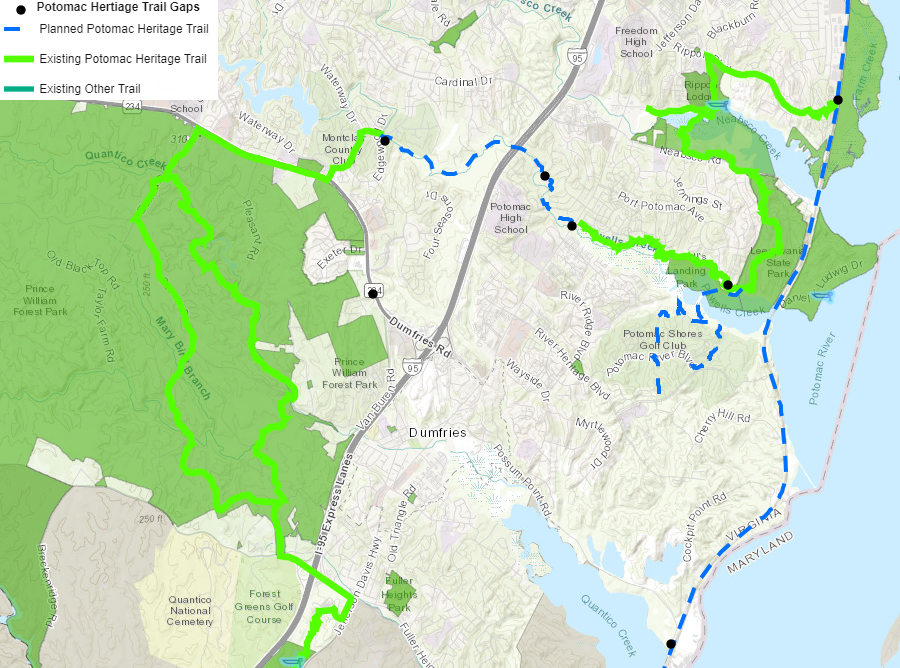
more miles of trails are planned than completed in Prince William County
Source: Northern Virginia Regional Commission, Long Distance Trails in Northern Virginia and Washington

more miles of trails are planned than completed in Prince William County
Source: Northern Virginia Regional Commission, Long Distance Trails in Northern Virginia and Washington
Bicycle and pedestrian trails in urban areas are used for multiple purposes, including commuting to school/work as well as for recreational use. In some places, paint designates specific portions of road pavement for use by just scooters and bicycles, rather than cars. Other places have shared use paths that parallel the paved road, while natural surface trails are most common within parks.
Some major recreational trails, such as the East Coast Greenway, traverse both rural and urban areas. As the western edge of the Washington and Old Dominion Trail has urbanized, use patterns have changed. Trail managers have to plan for different types of use in different areas, similar to how land use planners decide to zone different parcels for residential, commercial, and industrial uses.
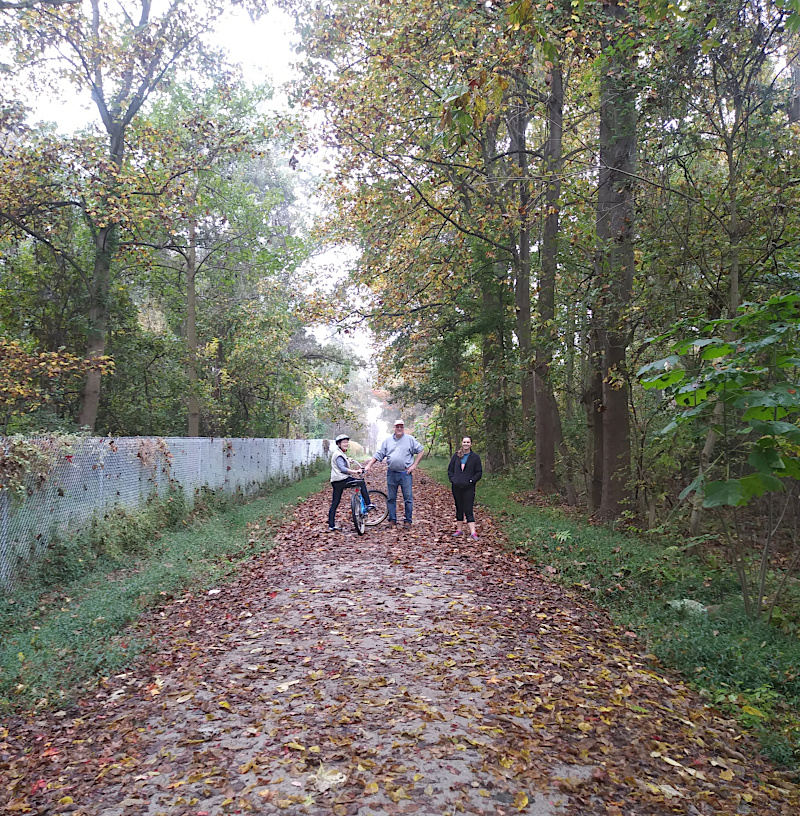
the East Coast Greenway and Potomac Heritage National Scenic Trail use the same route adjacent to Occoquan Bay National Wildlife Refuge (Prince William County)
Major recreational trails in the countryside have been developed for exercise and tourist use. Former railroads have been converted into recreational paths in rails-to-trails projects. Virginia has more miles of the popular Appalachian Trail than any other state.1
When the General's Ridge Golf Course was converted into Blooms Park in 2019, the City of Manassas Park converted the former paths for the golf carts into hiking trails. The fairways were abandoned and allowed to revegetate naturally.
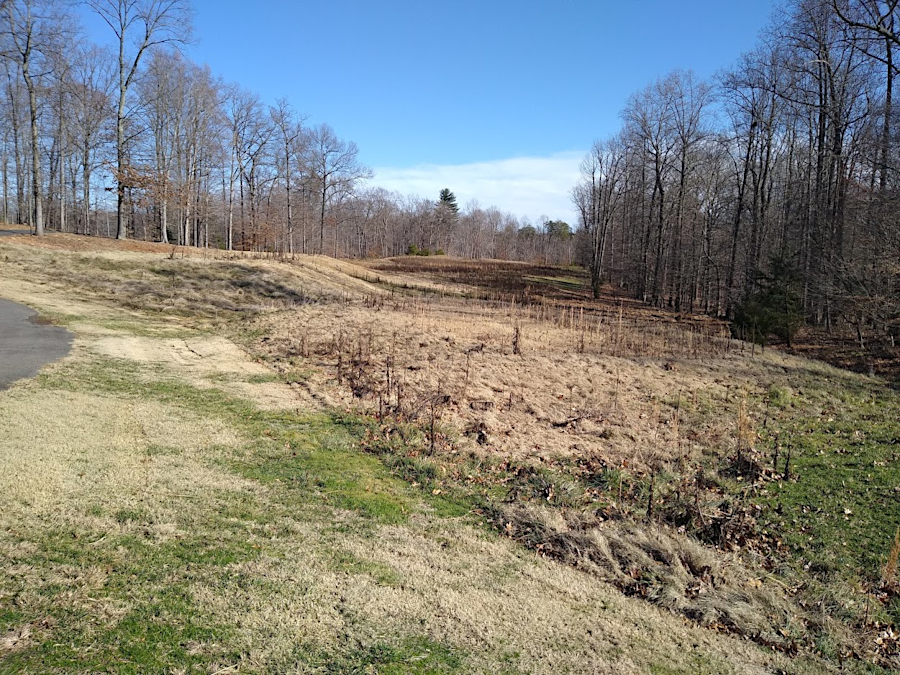
after General's Ridge Golf Course closed, the golf cart path became a hiking trail and fairways were left unmanicured
The Virginia Department of Game and Inland Fisheries (now the Virginia Department of Wildlife Resources) developed the Virginia Birding and Wildlife Trail across the state "to discover Virginia’s wild side."2
In 2021, the General Assembly appropriated $10 million to fund long-distance, regional, multiuse trails. It was the first major, dedicated funding to expand the trails network and to connect separated systems. At one point, the legislators even considered dedicating $50 million before compromising to the final figure. Since trails can be primarily linear parks or active transportation connections, two state agencies are involved. The Virginia Department of Conservation and Recreation (DCR) provides funding through the Recreational Trails Program, while the Virginia Department of Transportation provides Transportation Alternatives grants.3
The "Valley to Valley Trail Study" in 2021 sought to link Roanoke to Pulaski, connecting the Roanoke River Greenway to the New River Trail via the Huckleberry Trail in Christiansburg and the Radford River Greenway. Counting the 58-mile New River Trail, the bike/pedestrian connection could extend 100 miles from Greenfield in Botetourt County to the city of Galax.4
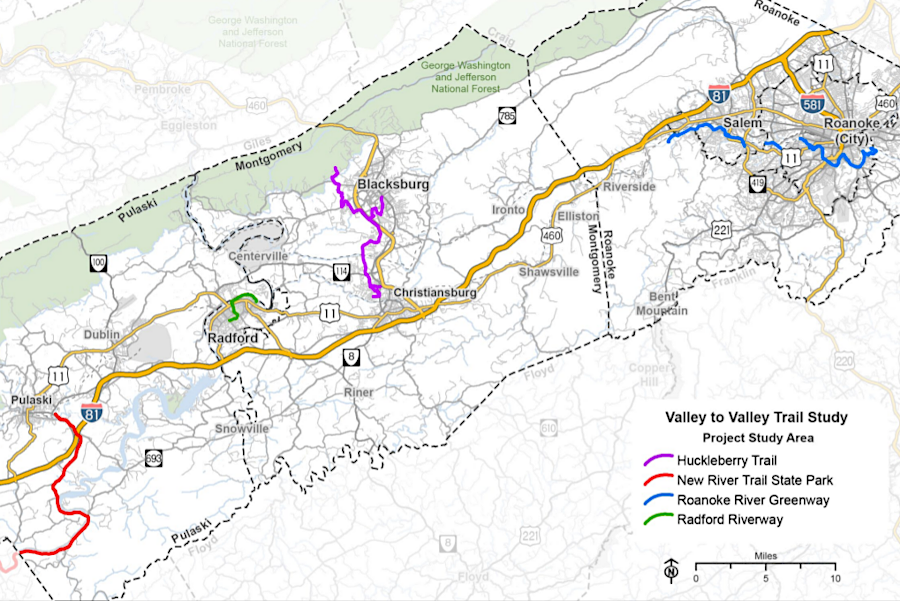
the Valley to Valley Trail would link the Roanoke River Greenway to the New River Trail
Source: Virginia Department of Transportation (VDOT), Valley to Valley Trail Study Presentation
The Fall Line Trail proposed to connect Ashland with Petersburg. The 43-mile trail was modeled on the very successful 53-mile Virginia Capital Trail, which opened fully in 2015 to link Richmond to Wiilliamsburg.
The Fall Line Trail was projected to cost $234 million. State and local funding sources provided the first $73 million. Of the remainder, almost 50% was provided by the Central Virginia Transportation Authority, which was funded by a recently-established regional tax on the sale of gasoline and diesel fuel. The Central Virginia Transportation Authority allocated $104 million at the end of 2021, and requested Governor Northam to include $132 million in the next state budget.5
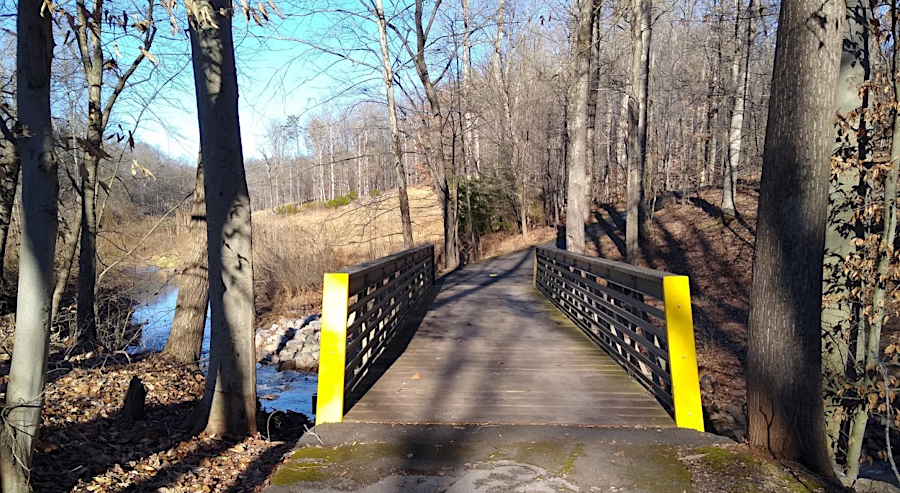
owners of trails must budget for maintenance costs, including bridge replacement
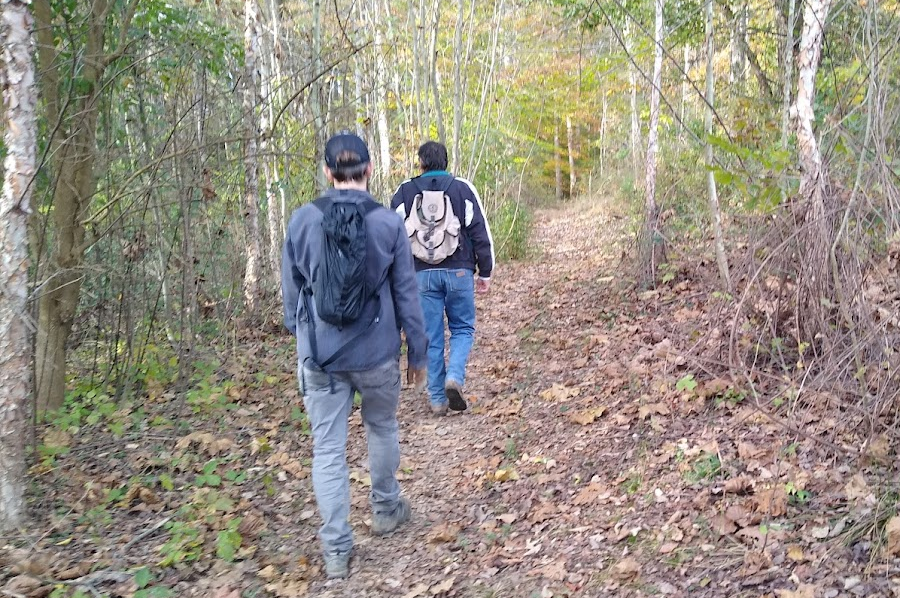
recreational trails in parkland are often natural surface, with no pavement or even wood chips
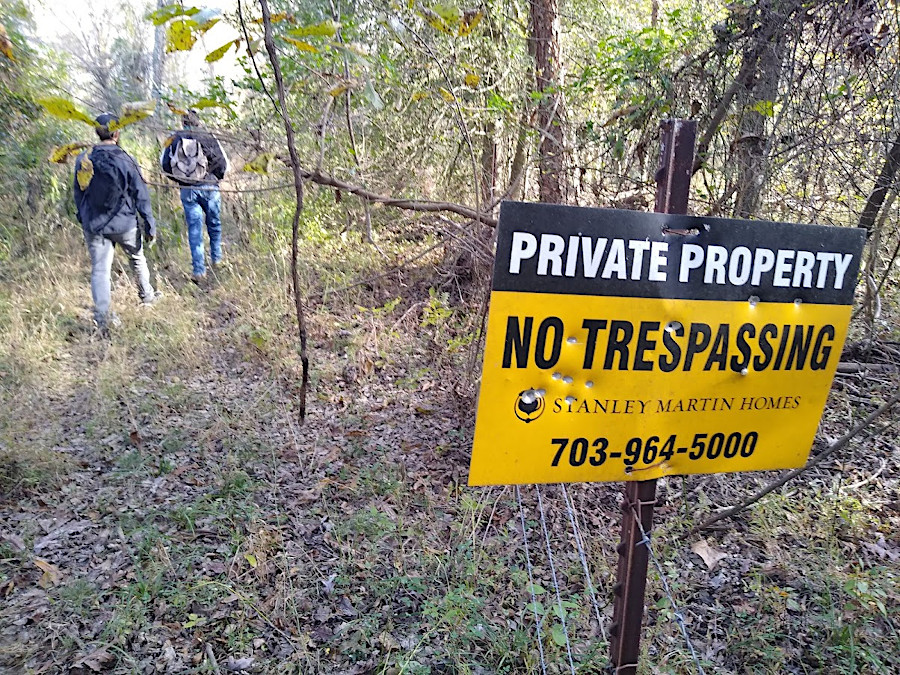
expanding trail networks requires obtaining rights-of-way across private property